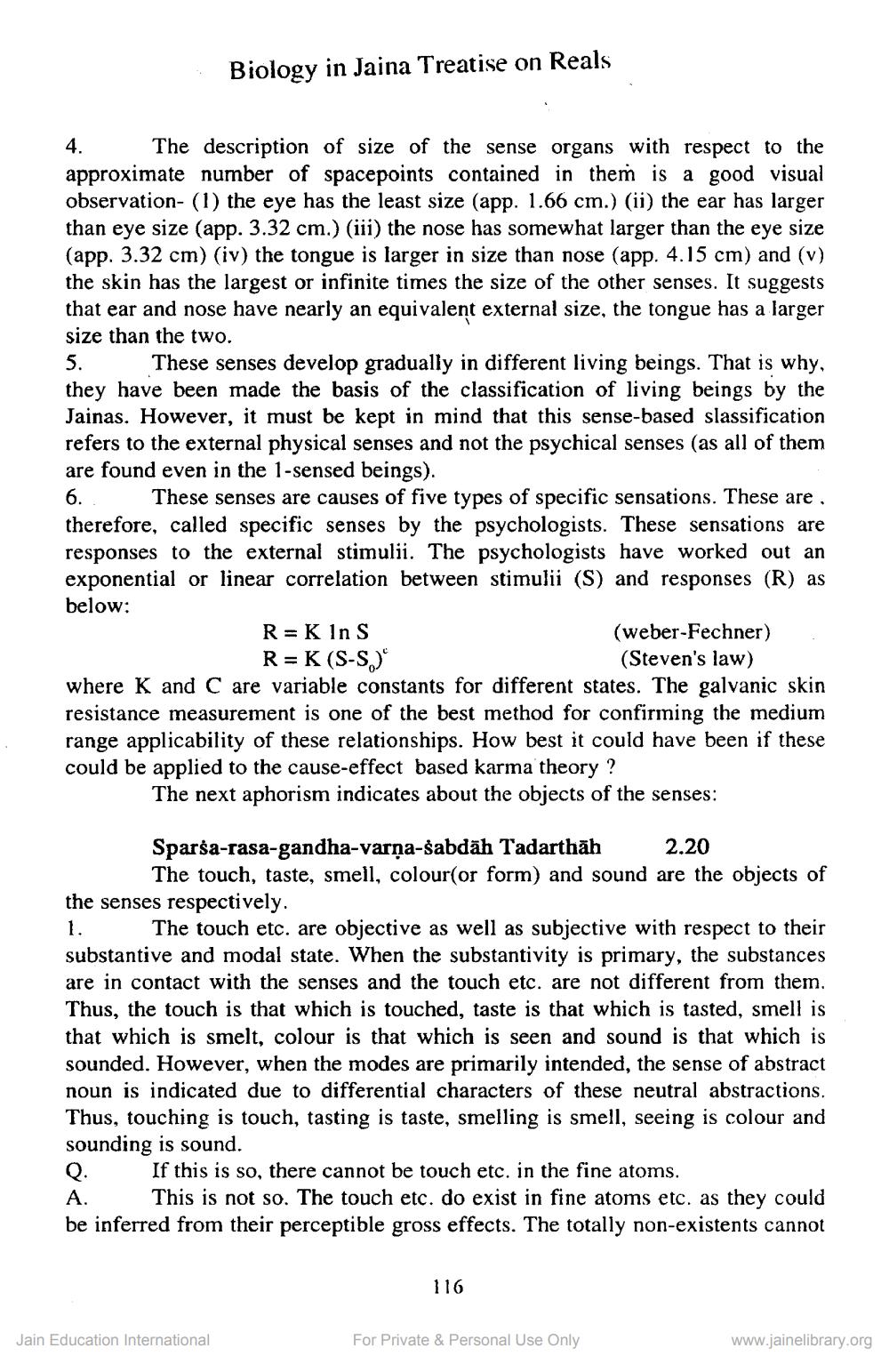________________
Biology in Jaina Treatise on Reals
The description of size of the sense organs with respect to the approximate number of spacepoints contained in them is a good visual observation- (1) the eye has the least size (app. 1.66 cm.) (ii) the ear has larger than eye size (app. 3.32 cm.) (iii) the nose has somewhat larger than the eye size (app. 3.32 cm) (iv) the tongue is larger in size than nose (app. 4.15 cm) and (v) the skin has the largest or infinite times the size of the other senses. It suggests that ear and nose have nearly an equivalent external size, the tongue has a larger size than the two.
These senses develop gradually in different living beings. That is why, they have been made the basis of the classification of living beings by the Jainas. However, it must be kept in mind that this sense-based slassification refers to the external physical senses and not the psychical senses (as all of them are found even in the 1-sensed beings). 6. These senses are causes of five types of specific sensations. These are. therefore, called specific senses by the psychologists. These sensations are responses to the external stimulii. The psychologists have worked out an exponential or linear correlation between stimulii (S) and responses (R) as below: R = K InS
(weber-Fechner) R= K (S-SO)
(Steven's law) where K and C are variable constants for different states. The galvanic skin resistance measurement is one of the best method for confirming the medium range applicability of these relationships. How best it could have been if these could be applied to the cause-effect based karma theory?
The next aphorism indicates about the objects of the senses:
Sparsa-rasa-gandha-varna-sabdäh Tadarthāh 2.20
The touch, taste, smell, colour(or form) and sound are the objects of the senses respectively. 1. The touch etc. are objective as well as subjective with respect to their substantive and modal state. When the substantivity is primary, the substances are in contact with the senses and the touch etc. are not different from them. Thus, the touch is that which is touched, taste is that which is tasted, smell is that which is smelt, colour is that which is seen and sound is that which is sounded. However, when the modes are primarily intended, the sense of abstract noun is indicated due to differential characters of these neutral abstractions, Thus, touching is touch, tasting is taste, smelling is smell, seeing is colour and sounding is sound. Q. If this is so, there cannot be touch etc. in the fine atoms. A. This is not so. The touch etc. do exist in fine atoms etc. as they could be inferred from their perceptible gross effects. The totally non-existents cannot
116
Jain Education International
For Private & Personal Use Only
www.jainelibrary.org




